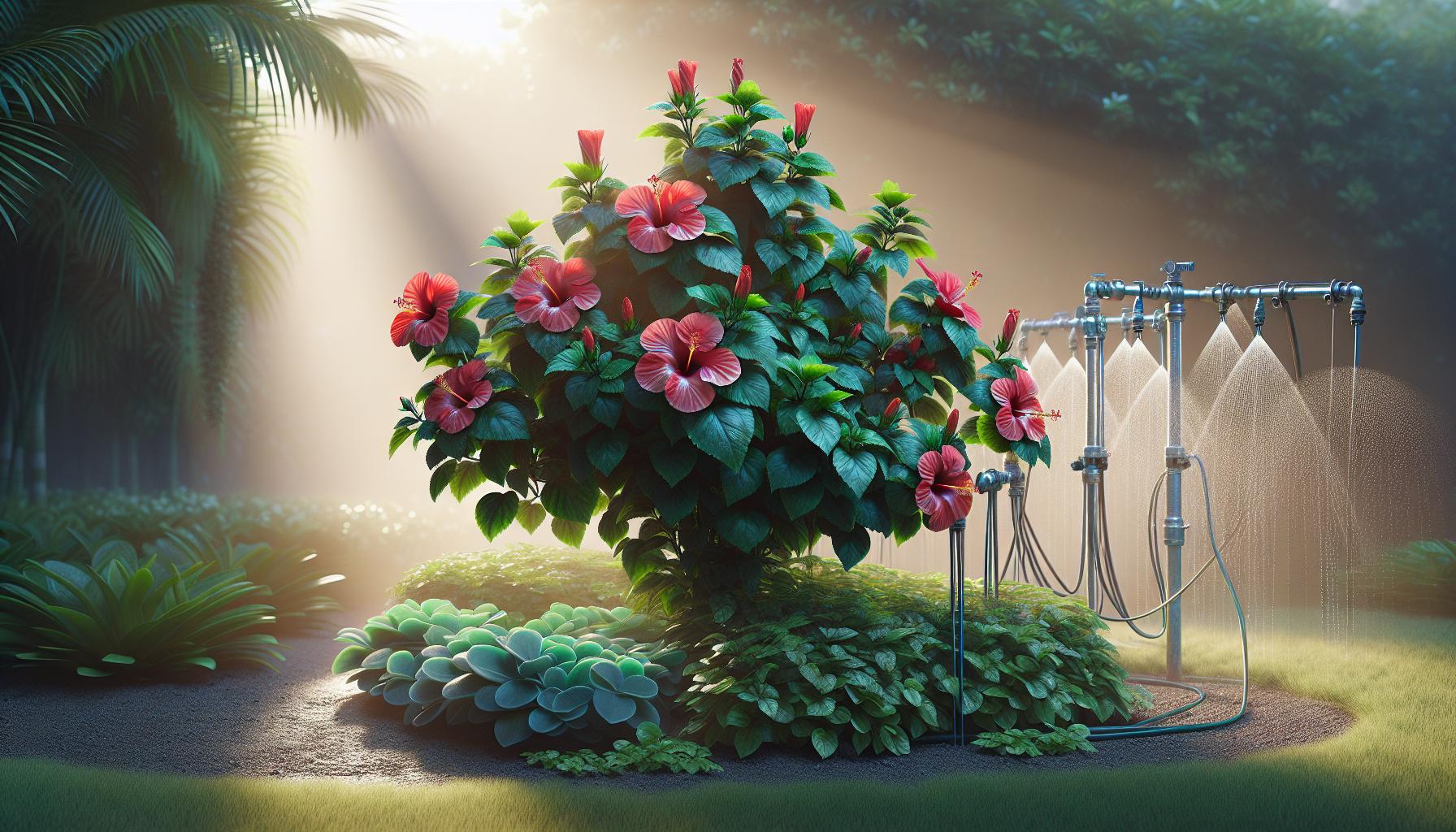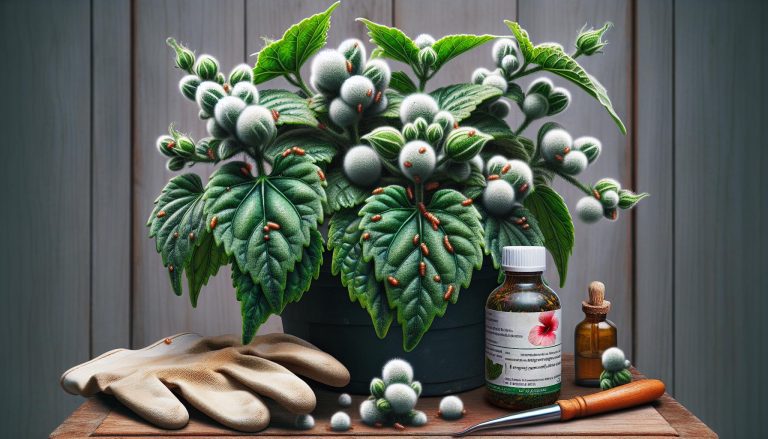Do Hibiscus Need a Lot of Water? A Guide to Perfect Watering Techniques
As a passionate gardener, I’ve always been captivated by the vibrant beauty of hibiscus flowers. But when it comes to their care, one question often arises: do hibiscus need a lot of water?
The answer isn’t as straightforward as you might think. While hibiscus plants do require regular watering, their specific needs can vary depending on factors like climate, soil type, and whether they’re grown in containers or in the ground. Overwatering can be just as harmful as underwatering, so it’s crucial to strike the right balance.
In this article, I’ll share my experience and insights on how to properly water your hibiscus plants. We’ll explore the signs of under and overwatering, the best watering techniques, and how to adjust your watering routine for different seasons and growing conditions.
Understanding Hibiscus Water Requirements
Hibiscus plants have specific water needs that vary depending on several factors. Understanding these requirements is crucial for maintaining healthy and vibrant hibiscus plants in your garden or indoor space.
Factors Affecting Hibiscus Water Needs
Hibiscus water requirements are influenced by multiple factors:
- Climate: Temperature and humidity levels impact water evaporation rates.
- Soil type: Sandy soils drain quickly, while clay soils retain moisture longer.
- Sun exposure: Plants in full sun typically require more water than those in partial shade.
- Container vs. ground planting: Potted hibiscus often need more frequent watering.
- Plant size and age: Larger, mature plants generally require more water than smaller, younger ones.
- Season: Water needs increase during active growing periods and hot summer months.
- Indoor vs. outdoor growing: Indoor hibiscus may have different watering needs due to controlled environments.
To determine the ideal watering schedule for your hibiscus, consider these factors and observe your plant’s response to different watering routines.
Ideal Watering Frequency for Hibiscus Plants
Hibiscus plants thrive with consistent moisture, but their watering frequency varies depending on several factors. I’ll guide you through the optimal watering schedule for hibiscus plants, ensuring they receive the right amount of water to flourish.
Seasonal Watering Adjustments
Hibiscus watering needs change with the seasons:
- Spring: Water 2-3 times per week as growth resumes
- Summer: Increase to 3-4 times weekly during peak blooming
- Fall: Reduce to 1-2 times per week as temperatures cool
- Winter: Water sparingly, only when soil is dry 2 inches deep
Adjust these frequencies based on your specific climate and rainfall patterns. In hot, dry summers, hibiscus may need daily watering, while in humid climates, less frequent watering is sufficient. Monitor soil moisture and plant response to fine-tune your watering schedule throughout the year.
Signs of Overwatering and Underwatering Hibiscus
Recognizing the signs of improper watering is crucial for maintaining healthy hibiscus plants. I’ll explore the telltale indicators of both overwatering and underwatering to help you identify and address these issues promptly.
Overwatering Signs
Overwatering hibiscus leads to several distinct symptoms:
- Yellowing leaves: Excess water causes nutrient deficiencies, resulting in chlorosis.
- Wilting despite moist soil: Waterlogged roots can’t absorb oxygen, causing drooping.
- Soft, mushy stems: Excessive moisture promotes fungal growth, leading to stem rot.
- Leaf drop: Oversaturated plants shed leaves to conserve energy.
- Mold or algae growth: Visible on soil surface or plant parts.
- Foul odor: Emanating from the soil due to root rot.
Underwatering Signs
Underwatered hibiscus plants exhibit different symptoms:
- Crispy, brown leaf edges: Lack of water causes leaf margins to dry out.
- Drooping leaves: Plants wilt to conserve water.
- Slow growth: Insufficient water stunts development.
- Flower bud drop: Plants abort buds to preserve resources.
- Dry, cracked soil: Visible in the pot or around the plant base.
- Curling leaves: Leaves roll inward to reduce water loss.
How to Correct Watering Issues
To address overwatering:
- Reduce watering frequency
- Improve drainage
- Remove affected parts
- Repot if necessary
For underwatering:
- Increase watering frequency
- Water deeply
- Apply mulch
- Use self-watering containers
By recognizing these signs early, you’ll be able to adjust your watering habits and maintain vibrant, healthy hibiscus plants.
Best Practices for Watering Hibiscus
Proper watering techniques are crucial for maintaining healthy hibiscus plants. I’ll share essential tips to ensure your hibiscus thrives with the right amount of water.
Soil Moisture and Drainage Considerations
Hibiscus plants prefer consistently moist soil without becoming waterlogged. I recommend using well-draining potting mix for container-grown hibiscus to prevent water retention. For in-ground plants, amend heavy clay soils with organic matter to improve drainage. Check soil moisture by inserting your finger 1-2 inches into the soil; water when it feels slightly dry. Ensure containers have adequate drainage holes to prevent water from pooling at the bottom. During hot summer months, mulching around the base of the plant helps retain moisture and regulate soil temperature.
Watering Methods for Hibiscus
Bottom-Up Watering
Bottom-up watering is an effective technique for hibiscus plants. I place the pot in a saucer filled with water, allowing the roots to absorb moisture from the bottom. This method prevents water from splashing on the leaves, reducing the risk of fungal diseases. I leave the pot in the saucer for 15-20 minutes, then remove it to prevent root rot.
Drip Irrigation
Drip irrigation is an efficient way to water hibiscus plants, especially for large gardens or multiple plants. I set up a drip system with emitters near the base of each plant, delivering water directly to the roots. This method conserves water and ensures consistent moisture levels. I adjust the flow rate to 1-2 gallons per hour for each plant, depending on its size and environmental conditions.
Hand Watering
Hand watering is a simple yet effective method for hibiscus care. I use a watering can or hose with a gentle spray nozzle, directing water at the base of the plant. This approach allows me to control the amount of water each plant receives and observe its condition closely. I water slowly, giving the soil time to absorb moisture, and avoid wetting the leaves to prevent fungal growth.
Self-Watering Containers
Self-watering containers are ideal for hibiscus plants, especially in areas with inconsistent rainfall. These containers have a reservoir at the bottom that holds water, which is drawn up into the soil as needed. I fill the reservoir every 5-7 days, depending on the weather conditions. This system maintains consistent moisture levels and reduces the frequency of watering.
Misting
While not a primary watering method, misting can benefit hibiscus plants in dry climates. I use a fine mist spray bottle to increase humidity around the plant, focusing on the leaves and stems. Misting is particularly helpful during hot, dry periods or when growing hibiscus indoors. I mist the plants 2-3 times a week, preferably in the morning to allow water to evaporate before nightfall.
Balancing Water and Other Care Requirements
Hibiscus plants thrive with a balanced approach to care, combining proper watering with other essential elements. I’ve found that maintaining the right balance ensures healthy growth and vibrant blooms.
Soil and Drainage
Well-draining soil is crucial for hibiscus plants. I use a mix of:
- 2 parts potting soil
- 1 part perlite
- 1 part coarse sand
This blend promotes adequate drainage while retaining enough moisture. For container-grown hibiscus, I ensure pots have drainage holes to prevent waterlogging.
Light Requirements
Hibiscus plants need ample sunlight for optimal growth. I provide:
- 6-8 hours of direct sunlight daily for outdoor plants
- Bright, indirect light for indoor hibiscus
In hot climates, I offer afternoon shade to prevent leaf scorching.
Temperature and Humidity
Hibiscus plants prefer warm conditions. I maintain:
- Daytime temperatures between 60-90°F (15-32°C)
- Nighttime temperatures above 50°F (10°C)
For humidity, I aim for 50-70% relative humidity. In dry environments, I use pebble trays or humidifiers to increase moisture levels.
Fertilization
Regular feeding supports lush foliage and abundant blooms. My fertilization routine includes:
- Applying a balanced, water-soluble fertilizer (10-10-10) every 2-3 weeks during the growing season
- Reducing fertilization to once a month in fall and winter
| Season | Fertilization Frequency |
|---|---|
| Spring/Summer | Every 2-3 weeks |
| Fall/Winter | Once a month |
Pruning and Maintenance
Proper pruning promotes bushier growth and more flowers. I follow these guidelines:
- Prune in early spring before new growth emerges
- Remove dead, damaged, or crossing branches
- Pinch back growing tips to encourage branching
Regular maintenance also involves removing spent blooms to promote continuous flowering.
By balancing these care requirements with proper watering techniques, I ensure my hibiscus plants remain healthy, vibrant, and prolific bloomers throughout the growing season.
Conclusion
Hibiscus plants require careful attention to their water needs for optimal growth and blooming. By understanding the signs of over and underwatering and implementing appropriate watering techniques, you’ll be well on your way to nurturing healthy hibiscus plants. Remember that watering is just one aspect of hibiscus care. Combining proper watering with other essential care practices will ensure your hibiscus thrives and produces stunning blooms throughout the growing season. With these insights and tips, you’re now equipped to give your hibiscus the care it deserves and enjoy its beautiful flowers for years to come.







